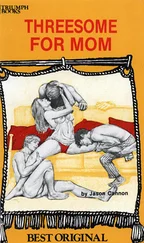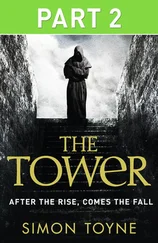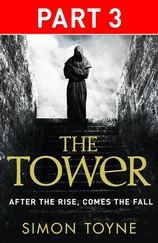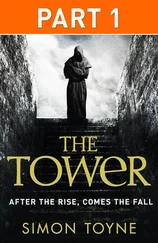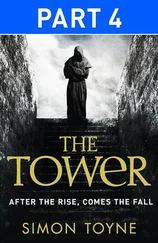Simon Foster - CHINA's Three Gorges & Xi'an
Здесь есть возможность читать онлайн «Simon Foster - CHINA's Three Gorges & Xi'an» весь текст электронной книги совершенно бесплатно (целиком полную версию без сокращений). В некоторых случаях можно слушать аудио, скачать через торрент в формате fb2 и присутствует краткое содержание. Год выпуска: 2010, Издательство: Hunter, Жанр: Старинная литература, на английском языке. Описание произведения, (предисловие) а так же отзывы посетителей доступны на портале библиотеки ЛибКат.
- Название:CHINA's Three Gorges & Xi'an
- Автор:
- Издательство:Hunter
- Жанр:
- Год:2010
- ISBN:нет данных
- Рейтинг книги:4 / 5. Голосов: 1
-
Избранное:Добавить в избранное
- Отзывы:
-
Ваша оценка:
- 80
- 1
- 2
- 3
- 4
- 5
CHINA's Three Gorges & Xi'an: краткое содержание, описание и аннотация
Предлагаем к чтению аннотацию, описание, краткое содержание или предисловие (зависит от того, что написал сам автор книги «CHINA's Three Gorges & Xi'an»). Если вы не нашли необходимую информацию о книге — напишите в комментариях, мы постараемся отыскать её.
CHINA's Three Gorges & Xi'an — читать онлайн бесплатно полную книгу (весь текст) целиком
Ниже представлен текст книги, разбитый по страницам. Система сохранения места последней прочитанной страницы, позволяет с удобством читать онлайн бесплатно книгу «CHINA's Three Gorges & Xi'an», без необходимости каждый раз заново искать на чём Вы остановились. Поставьте закладку, и сможете в любой момент перейти на страницу, на которой закончили чтение.
Интервал:
Закладка:
The Boxer Rebellion (1899)
Fifty years of foreign domination and civil unrest made for a mood that only needed harnessing in a popular rebellion to challenge the Qing dynasty. This came in the form of the Boxer (or Righteous Fists) Rebellion, led by a mystical group who claimed invulnerability through the righteousness of their cause and as a result of their breath-control exercises. Their aim was to overthrow the Qing dynasty and destroy foreign influence in China, causes that struck a chord with the masses. Although Cixi managed to quell the rebellion in 1899, she then tried to use the Boxers to her advantage to rid the country of foreigners. In 1900 war was declared on all foreigners within China and the Boxers were set loose on the streets of Beijing. They killed the German and Japanese ministers, along with any other foreigners they could find, but the British and others were able to hold out until an allied support force arrived and routed the Boxers.
The Fall of Dynastic China
In the aftermath of the Boxer Rebellion, Cixi and the emperor fled to Xi'an leaving her ministers to negotiate yet another humiliating peace settlement. Although Cixi clung to the throne until her death in 1908, the dynastic age had passed and plans were afoot to build a new China, without emperors. Protests against a foreign-owned railway line provided the impetus for the final rebellion against dynastic China. The child emperor Puyicould offer no resistance and in 1911 the provisional Republic of China was founded in Nanjingunder Dr. Sun Yatsen.
The Revolutionary Years
Dr. Sun Yatsen (1866-1925)
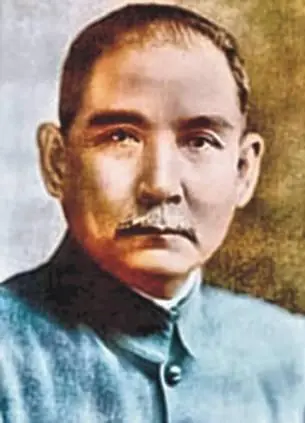
Dr. Sun Yatsen is regarded as the Father of Modern China. He is also known as Sun Zhongshan (the Chinese translation of his Japanese name, Nakayama, which means Middle Mountain). Sun Yatsen was born in Guangdong province and was then schooled around the globe, including a stint in Hawaii and medical training in Hong Kong. He soon developed an interest in politics and a firm belief in reform. After a failed uprising in Guangzhou in 1895 Sun fled to Europe, the US and Japan, acquiring funds and followers as he moved along. In 1905 he formed the Tong Meng Hui, or Revolutionary Alliancein Japan. His vision of modern China was based on the three principles of democracy, nationalism and livelihood and was modeled on the USSR, upon which the Nationalist Party (KMT)became increasingly dependent. After founding the republic, Sun was promptly deposed and fled the country. In 1915 he married Soong Qingling (whose sister, Meiling, married Chiang Kaishek in 1927). Returning to China in 1917, he finally gained control of the country in 1923, priming the way for Chiang Kaishek to ascend to the KMT's top spot. Sun died of cancer in 1925 and is still fondly remembered on both sides of the Taiwan Straits. Almost every town has a Zhongshan Road dedicated to him. The leagues of visitors to his mausoleum in Nanjing are further testimony to his significance in modern Chinese history.
The KMT
With the idealistic principles of Dr. Sun Yatsen at the helm, the future initially seemed bright for the republic, but continued Russian interference and China's failure to successfully unite against Japanese aggression meant that a rocky few decades lay ahead for the new China. After Yuan Shikaideposed the last emperor, a constitution was drawn up and elections were scheduled for 1913, but it soon became clear that Yuan wanted to establish his own power base. Rather than provoke civil war, Sun Yatsen stepped down from his position as head of the newly formed Kuomintang(KMT or Guomindang in Pinyin, National People's Party in English) and once again was forced into exile. Yuan scoffed at Sun Yatsen's withdrawal and in 1914 he made himself president for life. He died two years later and Dr. Sun Yatsen eventually returned to power, albeit heavily reliant on Soviet support. But foreign intervention in China continued to hinder stability and the humiliating terms of the 1919 Treaty of Versailles ignited protests in Tian'anmen Square which became known as the May Fourth Movement. Sun appointed his protégé, Chiang Kaishek(1888-1975, known in China as Jiang Jieshe), as his successor shortly before his death. Under Chiang, the KMT developed into a military dictatorship catering to the social elites, but did little to improve the lot of the rural majority or remove foreign control from the country.
The Emergence of Communism
Nationalism certainly wasn't the only ideology that emerged from the collapse of the imperial age but communism, showcased by the recent Russian revolution, was the only one that offered serious competition to the KMT. You can still visit the building in Shanghai where the Chinese Communist Partywas founded in 1921 (see Shanghai, Sightseeing ). The CCP initially comprised two groups, the first of which was led by Li Dazhao and included Mao Zedongamong its numbers, while the second was headed by Zhou Enlaiand was guided by Russian advisors. In 1923, following Russian advice, the CCP and the KMT united to form the National Revolutionary Army, which headed north to remove the threat posed by warlords. The expedition was a success but the unity between communism and nationalism was short-lived. In response to a Communist strike Chiang executed many of the CCP's top leaders in 1927, leaving the rest, including Mao Zedong, to flee for the hills.
The Long March
Chiang Kaishek perceived the Communists as a more significant threat than the encroaching Japanese and focused on trying to obliterate the CCP, forcing them deep into the countryside, where their support was strongest. By 1934 nationalist forces had surrounded Mao Zedong's mountainous Jiangxi baseand it seemed as if the Communists were on the verge of defeat. Instead, Mao led 100,000 troops on a year-long, 6,000-mile escape, which became known as the Long March. They traversed numerous mountain ranges, some of which were snowcapped and only 10,000 made it all the way to Yan'an in Shaanxi province. Although thousands died, the march became a symbol of the grit and determination of Mao and the Zunyi Conferencealong the way firmly established him as the leader of the CCP.
Japanese Encroachment & Civil War
The 1919 Treaty of Versailleshad ratified all of Japan's claims to Chinese territory and they were just waiting in the wings to swoop down on China. China's division presented this opportunity and the Japanese seized Manchuria in 1931, renaming it as the supposedly independent state of Manchukuoand installing the last Qing emperor, Puyi, as its puppet leader. Anti-Japanese sentiment ran high and in 1936 Chiang Kaishek was seized by his own officers (which became known as the Xi'an Incident) and forced into forging another doomed alliance between the KMT and the CCP. However, Manchuria was just a prelude to full-scale invasion and in 1937 Japanese forces swept into China and captured much of the east coast by 1939, forcing the government to mountainous Chongqing, from where they were reliant upon US and British airdrops. By 1940 the Japanese controlled Beijing, Shanghai, Nanjing and Guangzhou, while Chiang Kaishek's failure to distribute mutual arms to the Communist Red Armyresulted in the collapse of the KMT-CCP alliance. Up to 20 million Chinese are thought to have died during the Japanese invasion and the atrocities committed during the infamous 1937 Rape of Nanjingare reviled to this day.
Читать дальшеИнтервал:
Закладка:
Похожие книги на «CHINA's Three Gorges & Xi'an»
Представляем Вашему вниманию похожие книги на «CHINA's Three Gorges & Xi'an» списком для выбора. Мы отобрали схожую по названию и смыслу литературу в надежде предоставить читателям больше вариантов отыскать новые, интересные, ещё непрочитанные произведения.
Обсуждение, отзывы о книге «CHINA's Three Gorges & Xi'an» и просто собственные мнения читателей. Оставьте ваши комментарии, напишите, что Вы думаете о произведении, его смысле или главных героях. Укажите что конкретно понравилось, а что нет, и почему Вы так считаете.



